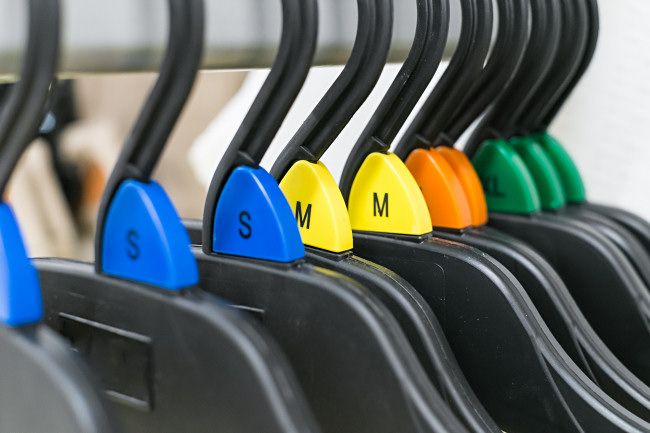Have you ever seen a fantastic-looking pair of pants for sale accompanied by the acronym TTS? Here's what this acronym means and how you can use it to make sure your clothes fit well.
True-To-Size
TTS stands for "true-to-size." Online sellers use it to describe items with the typical measurement of a particular size. You can find this specific acronym in buy and sell marketplaces, e-commerce stores, and other online retail environments. It's generally written in the uppercase "TTS."
TTS gets used in all kinds of clothing, from dresses to shoes. Many people use TTS to make the shopping process more manageable. When a piece of clothing is actually "true-to-size," you don't have to go through the trouble of figuring out if it would fit. If you already have a garment in your closet that matches this size, then you know what you're in for.
There are also a few less-common definitions for TTS. It can refer to "text-to-speech," a technology that processes text and turns it into human-like spoken language. In gaming circles, it might also mean "Tabletop Simulator," a title that allows users to play various physical tabletop games in a virtual multiplayer environment.
Where TTS Comes From
TTS likely came from online buy-and-sell marketplaces like Craigslist, eBay, and Amazon, later adopted by mainstream online retailers. The first entry for TTS on the online slang term repository Urban Dictionary was created in 2010 and reads, "abbreviation of true to size."
As online selling became a more widely-accepted method of transacting, TTS became even more prominent. Nowadays, you can see TTS on basically any website where you can buy and sell garments, from trendy clothing stores to social platforms like Facebook Marketplace. It's also fairly common in online forums and communities dedicated to clothing, such as sneaker-enthusiasts. You'll often see posters asking if a particular shoe is "TTS."
When a Size Isn't True
A big problem with using "true-to-size" is that there are no standardized measurements in the clothing industry. One store may consider a shirt a "Large," while another might consider the same shirt a "Medium." Since there's no universal standard, issues may arise when a buyer gets an ill-fitting piece of clothing after being told something is "TTS." For example, when a "TTS Size 12" doesn't fit a buyer who usually wears a size 12 for other brands.
There are several ways to address this. The first is by describing if a garment "runs big" or "runs small." These phrases mean that something is bigger or smaller than the average garment of its size. However, this can also be prone to inaccuracies, so some companies take it further by allowing users to crowdsource the fit through reviews. This helps provide prospective buyers with an accurate view of how other users find the sizing of the same garment.
The other solution is to use a size chart. Even though online clothes shopping is getting more popular, some people are reluctant to purchase something they might have to return because it doesn't fit. That's why some sellers have started providing size charts that offer the precise lengths of specific portions of a garment, and buyers can measure themselves to ensure that their purchases will fit. This is very common for formalwear, where having an exact fit is essential.
Size Variations
One thing to consider is that TTS can change depending on the cultural context. Some countries have sizes that tend to run larger than others. Therefore, a "TTS Large" in Europe may not mean the same thing as a "TTS Large" in America. There are also plus-sized and big-and-tall sizes, which can drastically vary by region.
There are also cases where the acronym can provide very accurate sizing. For example, pants usually use the length of a waistband as the size. However, variations can happen because of a difference in cut or slimness. A pair of pants being "true-to-size 32" typically means that the waistband is 32-inches long with minimal variation.
Another area where "TTS" is common is with shoes. Online shoe stores generally have product descriptions that include how "TTS" a particular pair is. On top of size concerns, shoes also tend to vary in width. Wearing shoes with the incorrect width tends to be very uncomfortable, so many stores provide a "true-to-size" meter for both length and width. Shoe-enthusiasts also have established generalizations about the sizing of particular brands, many of which either "run small" or "run big."
How to Use TTS
You can use TTS if you're a buyer or a seller. If you're a seller, use TTS when you want to communicate to a potential customer that your garment is sized accurately. If you're a buyer, you can use it to ask a store whether their products are true-to-size or not.
Here are a few examples of TTS in action:
- "Is this size seven skirt TTS?"
- "SELLING: Blue dress shirt, Men's XL TTS."
- "These shoes aren't really TTS for me. They run half a size bigger."
- "You should shop at this store, their clothes are all TTS."
Good luck, and happy shopping!


